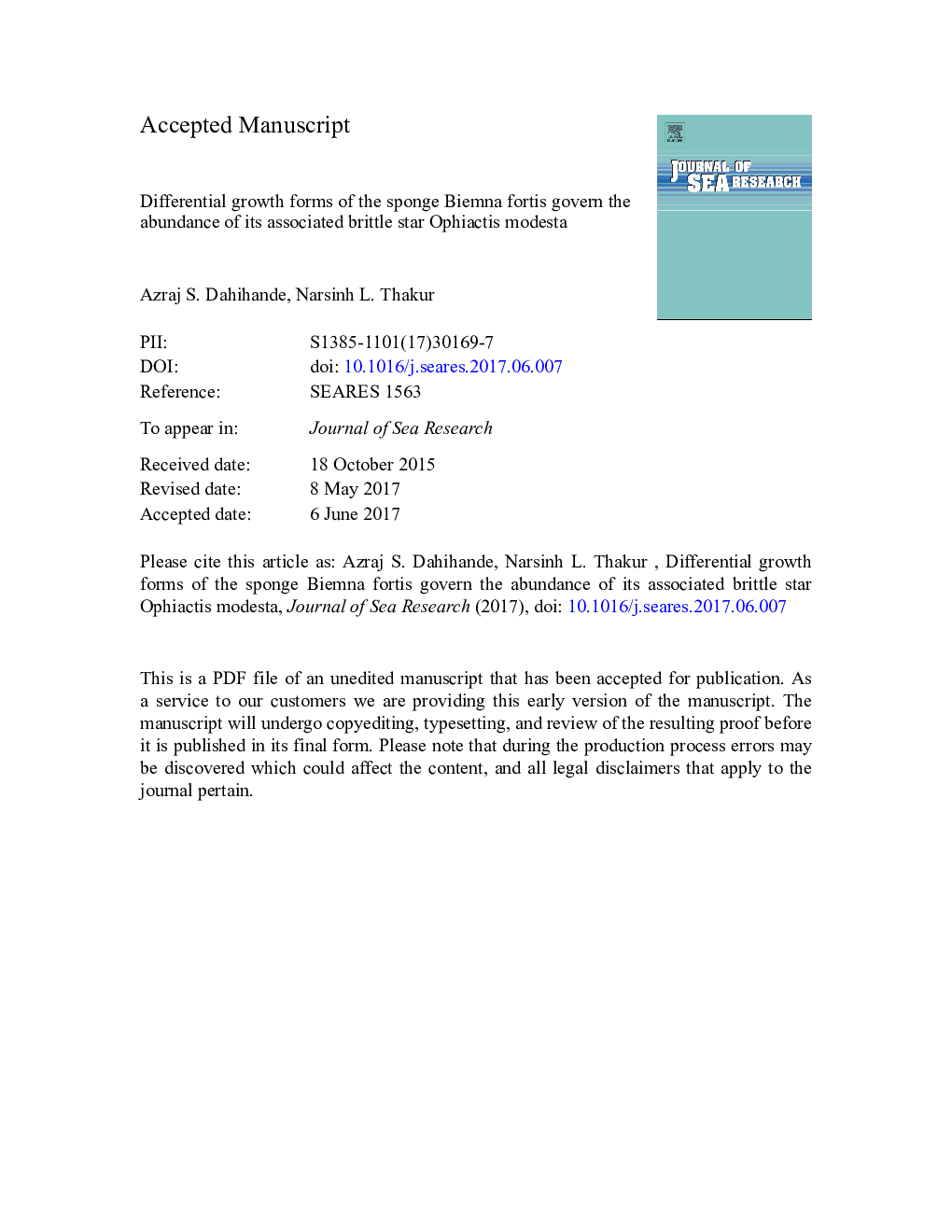| Article ID | Journal | Published Year | Pages | File Type |
|---|---|---|---|---|
| 5766044 | Journal of Sea Research | 2017 | 39 Pages |
Abstract
Marine intertidal regions are physically stressful habitats. In such an environment, facilitator species and positive interactions mitigate unfavorable conditions to the benefit of less tolerant organisms. In sponge-brittle star association, sponges effectively shelter brittle stars from biotic and abiotic stresses. The sponge, Biemna fortis (Topsent, 1897) was examined from two intertidal regions Anjuna and Mhapan along the Central West Coast of India for associated brittle star Ophiactis modesta (Brock, 1888) during 2013-2014. The study sites varied in suspended particulate matter (SPM). B. fortis at the high SPM habitat (Anjuna) had partially buried growth form and at the low SPM habitat (Mhapan) had massive growth form. O. modesta was abundantly associated with the massive growth form (50-259 individuals per 500Â ml sponge) but rarely occurred in association with partially buried growth form (6-16 individuals per 500Â ml sponge). In laboratory choice assay O. modesta showed equal preference to the chemical cues from both the growth forms of B. fortis. In addition, O. modesta showed significant preference to B. fortis compared to other sympatric sponges. These observations highlight the involvement of chemical cues in host recognition by O. modesta. Massive growth forms transplanted to the high SPM habitat were unable to survive but partially buried growth forms transplanted to the low SPM habitat were able to survive. Differential growth forms of the host sponge B. fortis at different abiotic stresses affect the abundance of the associated brittle star O. modesta.
Related Topics
Physical Sciences and Engineering
Earth and Planetary Sciences
Oceanography
Authors
Azraj S. Dahihande, Narsinh L. Thakur,
